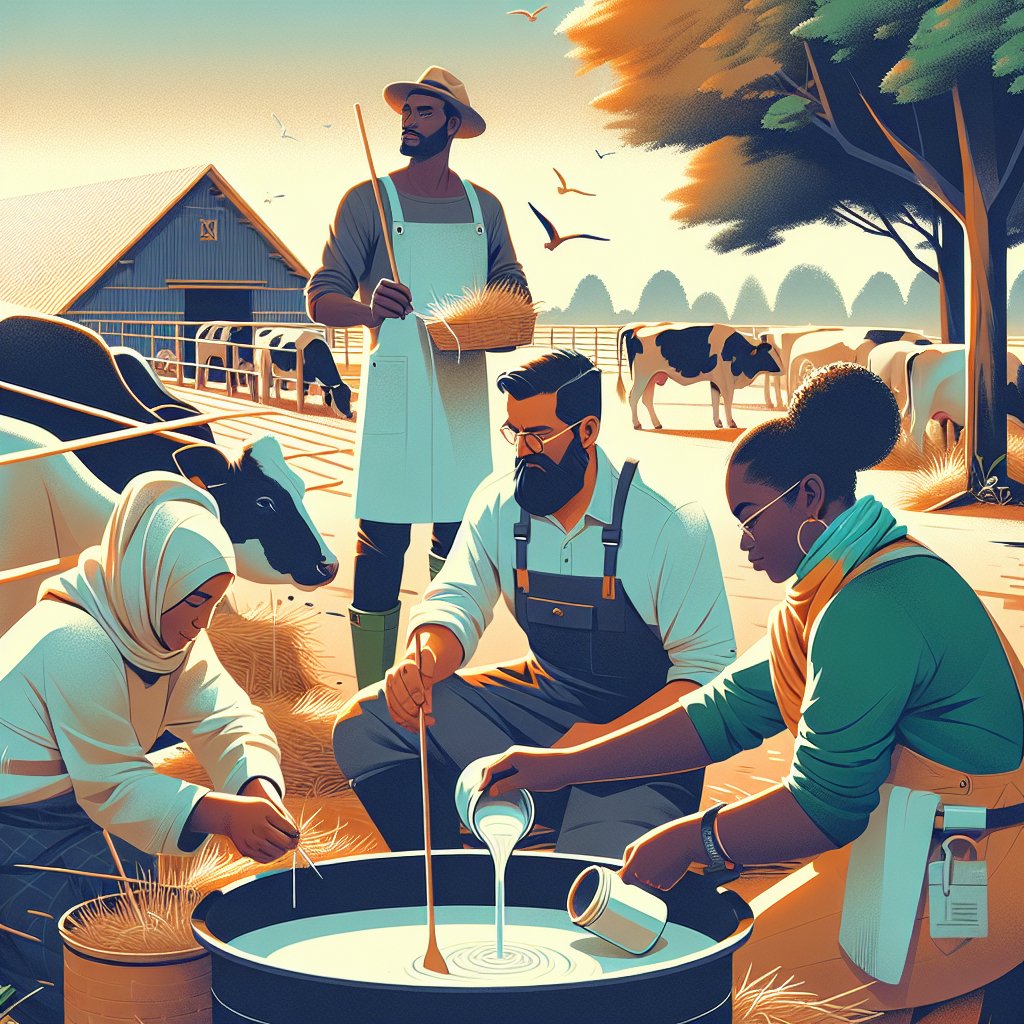
Maintaining the health of farm animals during extreme weather conditions is a critical concern for farmers worldwide. As climate change continues to influence weather patterns, farmers must adapt their practices to ensure the well-being of their livestock. This article explores various strategies and considerations for keeping farm animals healthy when faced with extreme temperatures, whether hot or cold, and other severe weather events.
Understanding the Impact of Extreme Weather on Farm Animals
Extreme weather conditions can have a profound impact on the health and productivity of farm animals. High temperatures can lead to heat stress, dehydration, and reduced feed intake, while cold weather can cause hypothermia, frostbite, and increased energy requirements. Additionally, severe weather events such as storms, floods, and droughts can disrupt the availability of feed and water, damage infrastructure, and increase the risk of disease outbreaks.
Heat stress is a significant concern for livestock during hot weather. Animals such as cattle, pigs, and poultry are particularly vulnerable to high temperatures due to their limited ability to dissipate heat. Heat stress can lead to decreased milk production in dairy cows, reduced growth rates in meat animals, and lower egg production in poultry. In severe cases, it can result in heatstroke and death.
Cold weather poses its own set of challenges. Animals exposed to low temperatures may experience increased energy demands as they attempt to maintain their body heat. This can lead to weight loss and decreased productivity if not managed properly. Young and sick animals are especially at risk during cold spells, as they may lack the necessary body reserves to cope with the cold.
Strategies for Managing Heat Stress
To mitigate the effects of heat stress, farmers can implement several strategies to keep their animals cool and comfortable. Providing adequate shade and ventilation is crucial, as it helps reduce the ambient temperature in animal housing. Trees, shade cloths, and well-designed barns can offer relief from direct sunlight and improve airflow.
Access to clean, cool water is essential for preventing dehydration and maintaining normal physiological functions. Farmers should ensure that water troughs are regularly cleaned and refilled, and consider installing additional water points during hot weather. In some cases, adding electrolytes to the water can help replenish lost minerals and support hydration.
Dietary adjustments can also play a role in managing heat stress. Feeding animals during the cooler parts of the day, such as early morning or late evening, can encourage feed intake. High-energy feeds that are easily digestible can help meet the animals’ nutritional needs without generating excessive metabolic heat.
In addition to these measures, farmers can use cooling systems such as fans, misters, and sprinklers to lower the temperature in animal housing. These systems can be particularly effective in poultry houses and dairy barns, where high animal densities can exacerbate heat stress.
Protecting Animals During Cold Weather
During cold weather, providing adequate shelter is essential to protect animals from wind, rain, and snow. Barns, sheds, and windbreaks can offer refuge from harsh conditions and help maintain a stable environment. Bedding materials such as straw or wood shavings can provide insulation and keep animals dry and warm.
Ensuring that animals have access to sufficient feed is crucial during cold spells, as their energy requirements increase. Farmers should monitor body condition and adjust feed rations accordingly to prevent weight loss and maintain productivity. High-quality forages and energy-dense supplements can help meet the increased nutritional demands.
Water availability is also important in cold weather, as frozen water sources can limit access. Farmers should regularly check and break ice in water troughs, or consider using heated waterers to prevent freezing. Ensuring that animals have access to unfrozen water is vital for maintaining hydration and overall health.
Preparing for Severe Weather Events
Severe weather events such as storms, floods, and droughts can pose significant challenges for livestock management. Developing a comprehensive emergency plan is essential for minimizing the impact of these events on animal health and farm operations.
Farmers should assess the risks associated with different weather events and identify vulnerable areas on their property. This may include evaluating the structural integrity of animal housing, securing feed and water supplies, and establishing evacuation routes if necessary.
Stockpiling feed and water can help ensure that animals have access to essential resources during disruptions. Farmers should also consider alternative feed sources and grazing strategies in the event of prolonged drought or flooding.
Communication is key during severe weather events. Farmers should stay informed about weather forecasts and warnings, and establish a network of contacts with neighboring farms, veterinarians, and local authorities. This can facilitate the sharing of resources and information, and provide support in times of need.
Conclusion
Keeping farm animals healthy in extreme weather conditions requires careful planning and proactive management. By understanding the specific challenges posed by hot and cold weather, as well as severe weather events, farmers can implement strategies to protect their livestock and maintain productivity. Providing adequate shelter, water, and nutrition, along with developing a comprehensive emergency plan, are essential components of effective livestock management in the face of climate variability.

